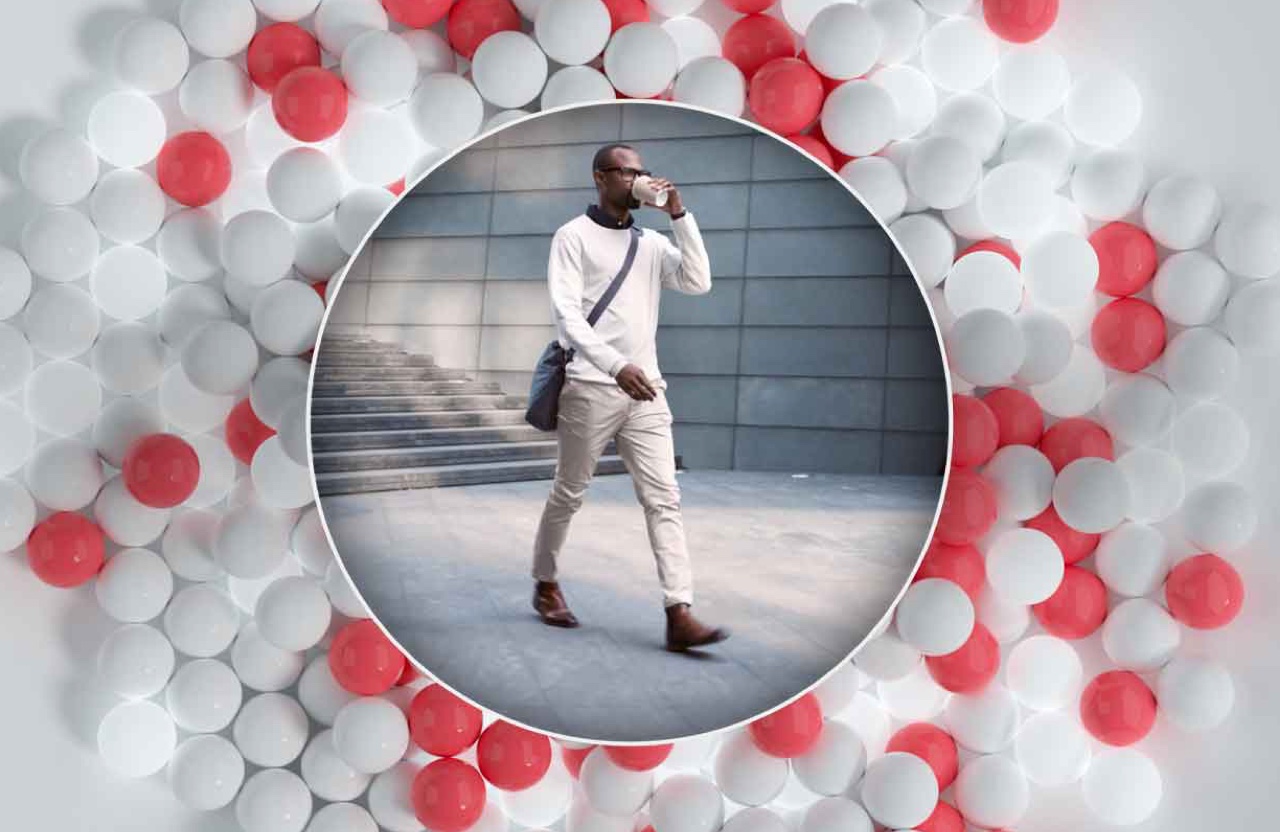Hannah: You’re listening to Next in Consumer Products from Publicis Sapient, the podcast that shares insights on unlocking what’s next in digital for the consumer products industry.
Hannah: Now, the pandemic shifts to always on, digital-first and a choice revolution have become mainstays, we enter an increasingly challenging landscape with a likely second once-in-a-lifetime recession. As many tighten their belts, consumer products firms have not been immune from the predicted downturn with the so-called lipstick effect doing little to combat weakening sales and revenue projections. Given the forecast, the number one question that emerges is how to ensure resilience and the agility to change at pace to keep your existing customers whilst growing with new ones.
Enter the emerging landscape of composable, a new component solution aimed at providing a flexible approach to building leading digital capabilities.
I’m your host, Hannah Wilcock, Global Head of Marketing for Consumer Products at Publicis Sapient, and here today to navigate this topic is Jason Long, Head of UK and I Consumer Goods at Salesforce, and Jon Panella, Group VP and Head of Commerce at Publicis Sapient. Jason, Jon, welcome to the podcast, and thank you for joining us. Let’s dive in.
So, Jon, why don’t you kick us off? We know from our analysts that being digital-first is the number one imperative for CEOs, but tell us specifically about CP and why prioritizing investing in digital capabilities is the right approach, and how composable slots in.
Jon Yeah, no, it’s a great question, Hannah, because when you look at it, so many of the CP companies have gone through mergers, acquisitions, spinning up new brands, things that have happened over the last few years during–during the pandemic. And from that perspective, they really need to have that relationship with their consumer. I mean, they’re competing with the retailers; the retailers’ kind of own the consumer experience today. That’s where most people shop. That’s where you get the first-party data about those individuals, and the CP companies really need a way to be able to drive that relationship, and hyper-personalize how they deal with those customers.
Well, composability gives you the ability to do that because it basically it gives you. first of all, control in the relationship that you have. It gives you the agility to try new things, to test and learn to move forward, and then most importantly, it gives you, the business users, the ability to really drive what content each individual user is seeing.
So, when you look at it, trying to go digital-first, the competition with the retailers is such that if you’re not doing it, the retailers are, and so from that perspective, it’s absolutely critical for the CP companies to be able to actually get engagedin a digital way with those consumers.
Hannah: And, Jason, could you talk us through in more depth why CP firms are thinking about composable versus other solutions available?
Jason: Great question. I think three reasons, and I guess I’ll cover them. Flexibility being the first, and I think this is really about flexible onboarding of new brands or new geographies. We know CPs will really look to acquire and create new brands quite frequently, so composable allows them to really bring these to market quickly and bring them into the fold with ease. That’s the first, the flexibility.
The second one is about speed to market, so it’s about spinning up those new channels really quickly, like marketplaces, and then really doing that at a minimized cost and time. So, really standing these up in those markets as quickly as they possibly can. So, that’s the second.
And then the third for me is around enabling the long tail, particularly in the CP companies. And this is about, really, a sales strategy about how quickly they can generate new markets and new models, as well as the channels, for that long tail, whether it be direct-to-consumer or directly to deliver those long – that long tail.
So, those are the three reasons why I think it’s really important that they consider composable over the other solutions and approaches, so...
Hannah: That makes sense, and I guess one of the most important things is really delving in a little bit deeper into what consumer products actually means because a lot of people have different varying kind of degrees of which they define what a consumer products firm is, so talk to us about whether this benefits some particular sectors in consumer products more than others. Say, beauty house of brands over maybe a food and bev brand?
Jon: First of all, I think it benefits all of them, but in different ways. You know, when you talk about kind of the, the beauty brand, the luxury brand, you know, that is a very rich relationship with that consumer. You know, you are, you are trying to provide them with a specific type of makeup, a specific type of fashion, that they are very interested in, so you’re driving heavy, promotional items towards them. Heavy personalization to be able to get those customers exactly what they want.
As Jason said, composability gives you the flexibility and the agility to do that from a time-to-market perspective. But I think it benefits food and beverage more from a volume perspective. Look, I’m looking for products, I can’t find them elsewhere. I want a long-term relationship, and Jason, I love the comment about, you know, marketplaces and new business models because I want replenishment. I want to order a product that it comes to my house every week, every month, in a frequency that I expect and a volume that I’m looking for. That’s a place where the CPs can really differentiate. specifically, I think, in food and beverage, from the retailers around that. So, I think it benefits both, but I think it is somewhat subtle, the differences between them.
Jason: And maybe if I could just add to that, Hannah, there because I think, you know, Jon’s absolutely right, that you know it does differ by subsegment of the CP businesses. But, ultimately, each of them are, you know, trying to get to that end consumer, you know, whatever subsegment they’re in. And so, I think for each of them there will be a different reason and a different logic to why they approach it in that way with composable.
Jason: But I think actually, definitely, they can all benefit for sure, so I don’t think it ultimately really matters which subsector. It just may differ how much you benefit, so...
Hannah: Yeah, and we’ve kind of spoken a bit, then, on the consumer lens of this and Jon, you mentioned that traditionally, you know, retailers own that consumer relationship. But going forward, CPs are going to explore a lot more new paths to reach them directly. How can this be really enabled with composable?
Jon: Yeah, so what composable — besides all the things that Jason talked about around agility and flexibility and ability to, you know, bring up new business models — it really gives you the chance to differentiate.
Look, I’ve been in the commerce business for 20-some years, and commerce is somewhat of a commodity. There’s plenty of solutions out there. There’s plenty of ways that you can sell to the consumer, but you want to be able to differentiate, and what composability gives you the ability to do is — I want to bring in a new business model and plug that in. I want to switch my search engine to something more intelligent so that I can increase the conversion rate. You know, the way I always look at it is getting them to add one more item to the cart and place one more order, you know, per month or per year than they normally would is where you get that 80% of your business is driven by those key 20% of your customers.
So, from that perspective, composability says I can swap things in and out. I can bring in a new component because it’s a very standard way of integrating to the rest of the model, and I don’t potentially have to do an overwhelming regression test of everything I’ve got in my system. I can bring this in, I can test, I can learn. I can say that didn’t work. This worked. Then I can plug something else in.
So, I think it’s really, from a CP perspective, they’re agile. This composability gives them the ability to differentiate while being agile.
Jason: And again, just for me to add to that because I think, you know, that’s key, Jon, that you talk about differentiation, and I think actually for me, what composable allows, is that personalization, which absolutely can be that differentiation, and I think we all see it – now we hear it.
You know that hyper-personalization and the reality of how the CP can really get really closer to that end consumer, and I think if they can get closer to that end consumer, then they can measure that marketing effectiveness better, and I think that’s the key bit for me because that then actually that drives that differentiation you talk about and how they can move their business forward, so...
Hannah: And if I was thinking about investing in this, what are some steps to success I could take to ensure I realize value?
Jason: So, for me, there’s a couple of foundations here, ultimately, and Jon will talk a little bit about it as well, but ultimately, for me, it’s about that data strategy and that infrastructure architecture is really understanding, you know, the way composable really is to benefit companies.
It’s about making sure that you can adapt as you go forward. And, yeah, utilize the, the composability nature in the right way, and so for me about that, having a proper data strategy, proper foundational infrastructure strategy as well is critical to set you up for success long term, you know, technology and architecture is one thing.
And then, Jon, I know you’ll talk about the other things that are really important, but those for me are the foundation bits that you need to get right to really get the benefit of composability in the long term, so...
Jon: Yeah, no I–I couldn’t agree with you more, Jason. I mean this is all about data. When you think about a CP, I’m not necessarily trying to drive tons of revenue through a direct-to-consumer channel. What I’m trying to drive is engagement, and that engagement is going to take place because of that data you get; you’ll benefit multiple times what you do in revenue through how you’re able to leverage that data across the ecosystem.
But the other thing I want to touch on is the organizational side effects. When you look at a CP, multiple brands, multiple countries, how do you enable individual regions, individual brands to have control without creating, you know, a circus that everybody’s making changes, every site looks different and so forth? And composability really gives you the ability to say I want to create a federated model that has a centralized component where there’s standard templates, there’s standard datasets.
There's standard APIs from that perspective. But I want to give the brand the ability, as Jason was talking about, to really spin something up and do it quickly and have it be different while based on that same–that same architecture. So, you know, composability is fantastic from that perspective because it allows you to obviously inherit those templates, use them across the board, while giving your business users the capability of being able to have local promotions, have local content, but driven throughout that overall model.
So, I think it’s so critical because everything we’ve talked about – agility, differentiation – is driven around that model, so I think folks really need to think about the data side, as Jason said, absolutely critical, and the business organizational side of how they’re going to manage this.
Hannah: Great! Thank you, Jason, and Jon. It’s been a pleasure having you with us.
Hannah: Thanks for tuning in to Next in Consumer Products. Be sure to subscribe so you don’t miss a beat on the future of digital in the CP industry.










